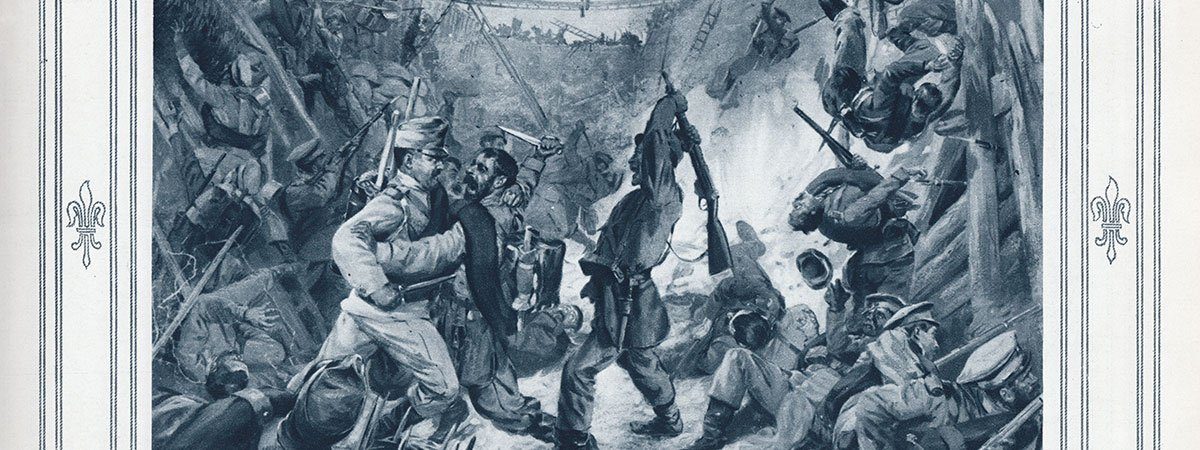Fought between July 28, 1914 and November 11, 1918, World War I was a global conflict between the Central Powers of Germany, Austria-Hungary, the Ottoman Empire and Bulgaria; and the Allies which was a coalition of many nations, most prominently the Great Britain, France, Russia, Japan and Italy. The Eastern Front of the First World War was roughly delimited by the Baltic Sea in the west; Minsk in the east; Saint Petersburg in the north; and the Black Sea in the south; a distance of more than 1,600 kilometers. The entire frontier had the Russian Empire and Romania on one side; and the Central Powers on the other. The Eastern Front saw the Central Powers defeating the Russian Empire in several major battles. This ultimately led to Russian withdrawal from WW1 through the Treaty of Brest-Litovsk. Here are the major battles and events of World War I on the Eastern Front including their dates, places and nations involved.
Russia Invades East Prussia and Galicia
Date: August 17, 1914
The Russian military was the largest in the world consisting of 1.4 million men prior to the war. Contrary to their enemy’s expectations, the Russians were able to mobilize enough men within 2 weeks. Two Russian armies were sent to East Prussia in Germany, and four armies were sent to invade the Austro-Hungarian province of Galicia.
Battle of Galicia
Date: August 23 to September 11, 1914, aka Battle of Lemberg
By August 23, 1914, Austro-Hungarian 1st, 3rd and 4th Armies were concentrated in Galicia with the aim of invading Russian Poland. They now faced the Russian 3rd, 4th, 5th and 8th Armies in the major Battle of Galicia. The Austro-Hungarian armies were severely defeated and forced out of Galicia, while the Russians captured Lemberg. As the Austrians retreated, many Slavic soldiers in the Austro-Hungarian Army surrendered and some even offered to fight for the Russians. The Austro Hungarian casualties numbered in excess of 400,000 while that of the Russians were at 225,000.
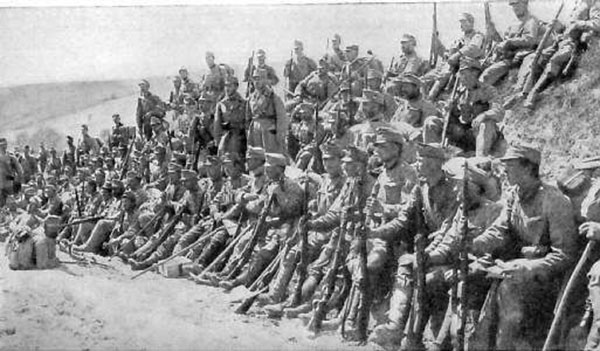
Battle of Tannenberg
Date: August 26 – 30, 1914
The German Eighth Army launched a surprise attack on the invading Russian 2nd Army and won a decisive battle near Tannenberg. The Russian 1st Army was also routed in subsequent engagements and there were 170,000 Russian casualties with minimal loss to the Germans.
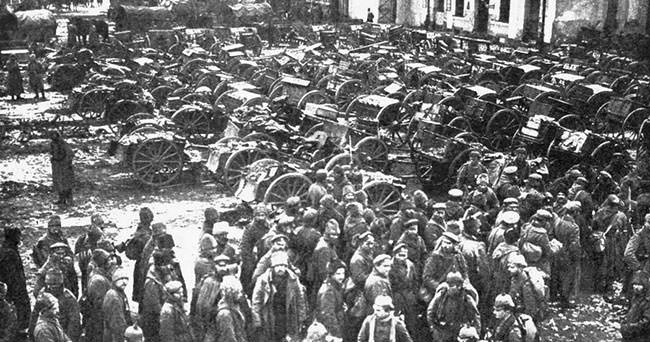
First Battle of Masurian Lake
Date: September 7 – 14, 1914
In a German offensive, General Paul von Rennenkampf’s Russian First Army was pushed back and eventually out of German territory by the General Hindenburg’s German Eighth Army. A German advance was however halted by the arrival of the Russian Tenth Army.
Siege of Przemyśl
Date: September 16, 1914 – March 22, 1915
As the Austro-Hungarian forces fell back over 160 kilometers to the Carpathian Mountains after the Battle of Galicia, the fortress of Przemyśl was the only Austrian post to hold out. The Siege of Przemyśl, the longest siege of the First World War, ended in a complete Russian victory a few months later.
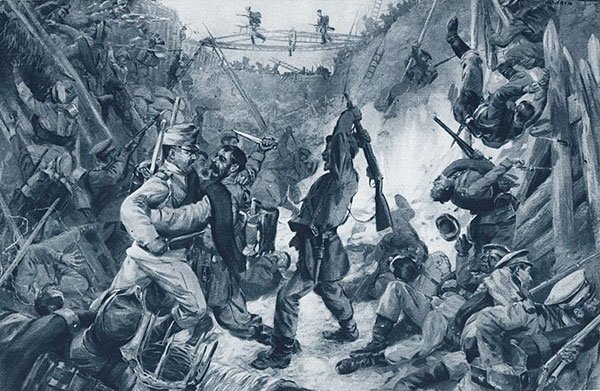
Black Sea Raids
Date: October 29, 1914
The Ottomans, with the help of the Germans, carried a naval sortie in the Black Sea ports of Russia. The attack was conceived by Ottoman War Minister Enver Pasha and led to the entry of the Ottoman Empire in World War I. They would officially declare war on the 11th of November.
Second Battle of Masurian Lakes
Date: February 7 – 22, 1915
The German Eighth and Tenth Armies launched a winter offensive with the intent of advancing beyond the Vistula River. The battle ended in a German victory giving them a toehold in Russian territory. However, the Russian Tenth Army was able to halt any further advance. In the following weeks, the Germans drove the Russians out of their remaining small enclaves in East Prussia.
Gorlice Tarnów Offensive
Date: May 2 – June 22, 1915
The Austro-Hungarians had faced considerable reverses since the beginning of the war. Due to this, they looked for German support on the Eastern Front. A joint offensive under General August von Mackensen was thus planned and launched in the Gorlice Tarnow area, southeast of Krakow. Initially conceived as a minor effort to relieve pressure on the Austro Hungarians, the offensive was a striking success for the Central Forces, who were able to decisively defeat the Russian III Army, recapture Galicia along with Przemyśl and advance for miles within Russian territory.
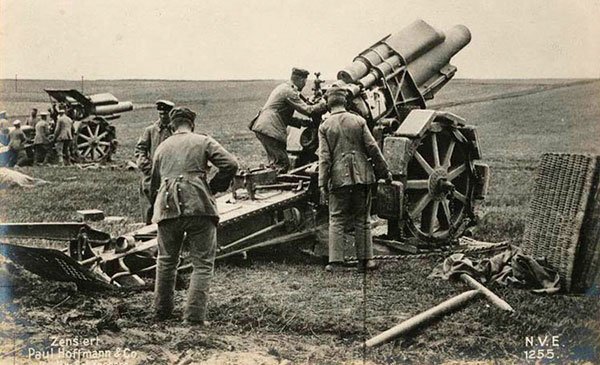
Great Retreat of 1915
Date: July – September 1915
Suffering heavy casualties and loss of military equipment, the Imperial Russian Army was ordered to retreat from the Galicia Poland salient by the Russian Stavka, the high command of the armed forces in the Russian Empire. A strategic retreat was therefore conducted to shorten the front lines and avoid the potential encirclement of large Russian forces in the salient. The German advance was halted by Russian counterattacks in late September, and a new frontline was established from the Baltic Sea through Belarusian forests to the Romanian border.
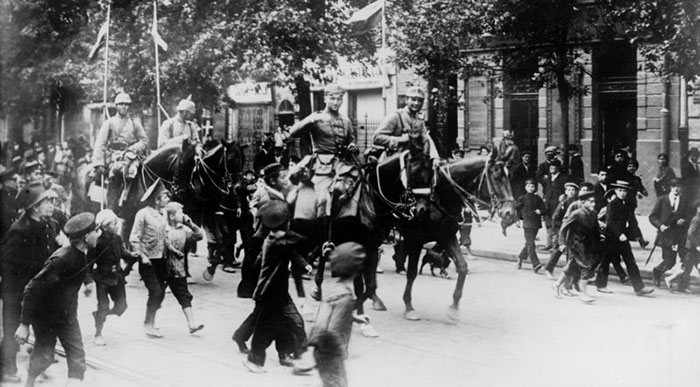
Lake Naroch Offensive
Date: March 18 – 30, 1916
Fulfilling the request of the French, the Russian Second Army launched an operation near Lake Narach to help relieve pressure on the western front from Verdun. The operation was a total failure for the Russians.
Brusilov Offensive
Date: June 4 – September 20, 1916
The southwestern front of the Imperial Russian Army under General Aleksei Brusilov, launched one of their most successful, and the most lethal offensive in World War I. Four Russian armies were round up and the attack began on 4th June with a massive artillery barrage on Austro Hungarian lines. The offensive would end in September when the Russian resources began running out. The Austro Hungarians had by now lost close to 1,000,000 men as casualties and 25,000 sq. km of territory. Due to this, Germany had to aid its ally and send divisions from the Western Front. This, in turn, would ruin German plans on the Western Front.
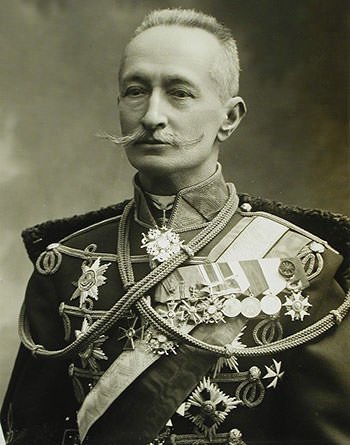
Operation Faustschlag
Date: February 18 – March 3, 1918
The last major action on the Eastern Front began with Operation Faustschlag (“Operation Fist Punch”). This offensive by the Central Powers saw little Russian resistance due to the turmoil of the Russian Revolution and the subsequent Russian Civil War. Huge territories were captured in the Baltics, Belarus and Ukraine, forcing the Bolshevik government of Russia to sign the Treaty of Brest-Litovsk, which officially ended Russian participation in the First World War.

